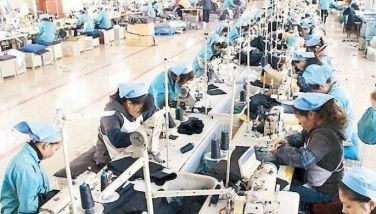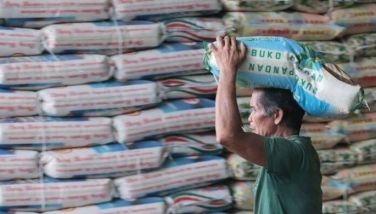Labor gap

Last week, Bloomberg had what could have been a feel good story that talked about how the Build Build Build program would be able to allow the repatriation back to the country of overseas Filipino workers. But that’s because the program is, even now, running into a serious skilled labor shortage.
It isn’t as if this is a new problem. Colliers International had already pointed out that the labor gap problem has delayed completion of some projects in the private construction industry. Of the 16,200 additional residential units that Colliers expected in Manila last year, only about 7,400 units were completed in the first three quarters.
As to be expected, the skilled construction workers are abroad and the local construction companies must make do with available labor that lacks training and experience. The bigger construction companies have their own training programs.
Bloomberg reported that “to ease the shortage, the state agency Technical Education and Skills Development Authority (TESDA) is training more building workers and engineers. But that may prove too little and too late.
“Tesda, in the past six years, failed to train construction workers and zeroed in on the service industry such as hotels, food and business process outsourcing,” Ibarra Paulino, executive director at the Philippine Constructors Association, told Bloomberg.
What sort of skills will the infra program need? They will need to find construction engineers, welders, and trained workers to operate the cranes, earth movers and heavy equipment. Will government launch a formal repatriation program? More than a million Filipinos leave each year.
This is exactly what I have been saying. They have been raising expectations for BBB in a propaganda overdrive. They should be managing expectations instead.
As Bloomberg pointed out, it isn’t as if we are the only country in the region that needs skilled construction workers. “In Japan, where wages are much higher, Tokyo is in the middle of preparations for the 2020 Olympic Games. Singapore is doubling the size of its mass transit system, while Indonesia, India and Malaysia are all on infrastructure drives…”
Budget Secretary Benjamin Diokno thinks it is as simple as a bidding war for workers. “Companies should be willing to adjust their wage rates,’’ Diokno told Bloomberg. But a bidding war will seriously disrupt local pay scales in the construction industry and will cause serious cost overruns on current projects.
But there is no choice. As a Singaporean analyst interviewed by Bloomberg puts it, “A failure to push through Duterte’s infrastructure plans could adversely affect the country’s growth prospects.” Bullish sentiments about our economy are premised on an infra construction boom and could start to evaporate as early as next year.
Or maybe, the Chinese will just bring in their own workers, something they do in other third world countries where they finance infra projects. But the political impact of seeing Chinese workers while we still have an army of unemployed, untrained as they may be, could be serious for the administration.
In the meantime, here is a reaction to my column last Wednesday by an economist familiar with the progress of our infra projects.
“You are right that some groundbreaking ceremonies are only for publicity purposes. Consider the LRT-MRT Common Station. The groundbreaking ceremonies were held on Sept. 29, 2017, and until now no actual construction has started. The same situation applies to most projects that had already made ceremonial groundbreaking…
“NEDA announced last Jan. 18 that Phase 1 of the Mega Manila Subway Project will start next year, not this year, and would be completed by 2027, and not in 2024. Both detailed engineering studies and financial closure are still to be finalized. This project is supposed to cost $7.7 billon, but the financial commitment promised by Japan during the ASEAN Summit in 2017 was only $924 million…
“But my actual concern is the current process of selecting, evaluating, and approving projects. The problem with most mega projects or big ticket items is that no full and detailed feasibility studies were made before being rushed for ICC Board approval for public relations purposes. That explains the continuing delay in implementation…
“Another issue is that although Build Build Build requires a different human resource complement, no such improvement in recruitment and training has been undertaken in the public sector under this administration. If PCA insists on Filipino First policy, local contractors do not have the required resources to build the mega projects within the time frame.
“For projects that started in this and the previous regime, construction productivity remains to be a problem. Consider MRT 7.
“The middle lane of Commonwealth Avenue from Philcoa up to Tandang Sora has been fenced off from traffic since April 2016, but there was practically no actual construction until recently; no single post has been erected in this area since April 2016.
“Consider the Skyway extension segment from Buendia up to Plaza Dilao, which DPWH wants to inaugurate in March 2018 (now moved to June 2018). The Plaza Dilao end of this project is just in the process of building posts.
“The pillars from Osmena Highway to Buendia were all completed in September 2017, but the girders are just beginning to be uploaded in mid January 2018. This is another example of public relations wishful thinking of DPWH.
“The LRT1 extension project has started very slowly, three years after the PPP contract was approved. Let us forget the MRT3 rehabilitation.
“LTFRB is, likewise, making life even more difficult for the riding public: removing Angkas, limiting the capacity of Grab and Uber, and reducing the number of jeepneys. In other words reducing supply, while demand remains unaddressed by the promised new infrastructure projects.
“Obviously, this government is practicing KKD (Kanya Kanya Diskarte) policy. Cheers.”
Delayed projects suffered from DPWH’s failure to deliver right of way on time.
Another technocrat commented that “the feasibility study for Mindanao Railway is very raw and flawed, but NEDA approved it (political pressure). Its timetable is fantasy – completion in 2020 when ROW for 105-km has not yet been surveyed.”
I think BBB needs a “bastonero” or someone who will be on top of everything to make sure the loose ends are attended to. Will it be Ben Diokno or will it be NEDA? Someone’s head must be on the line.
Boo Chanco’s e-mail address is bchanco@gmail.com. Follow him on Twitter @boochanco.
- Latest
- Trending





























